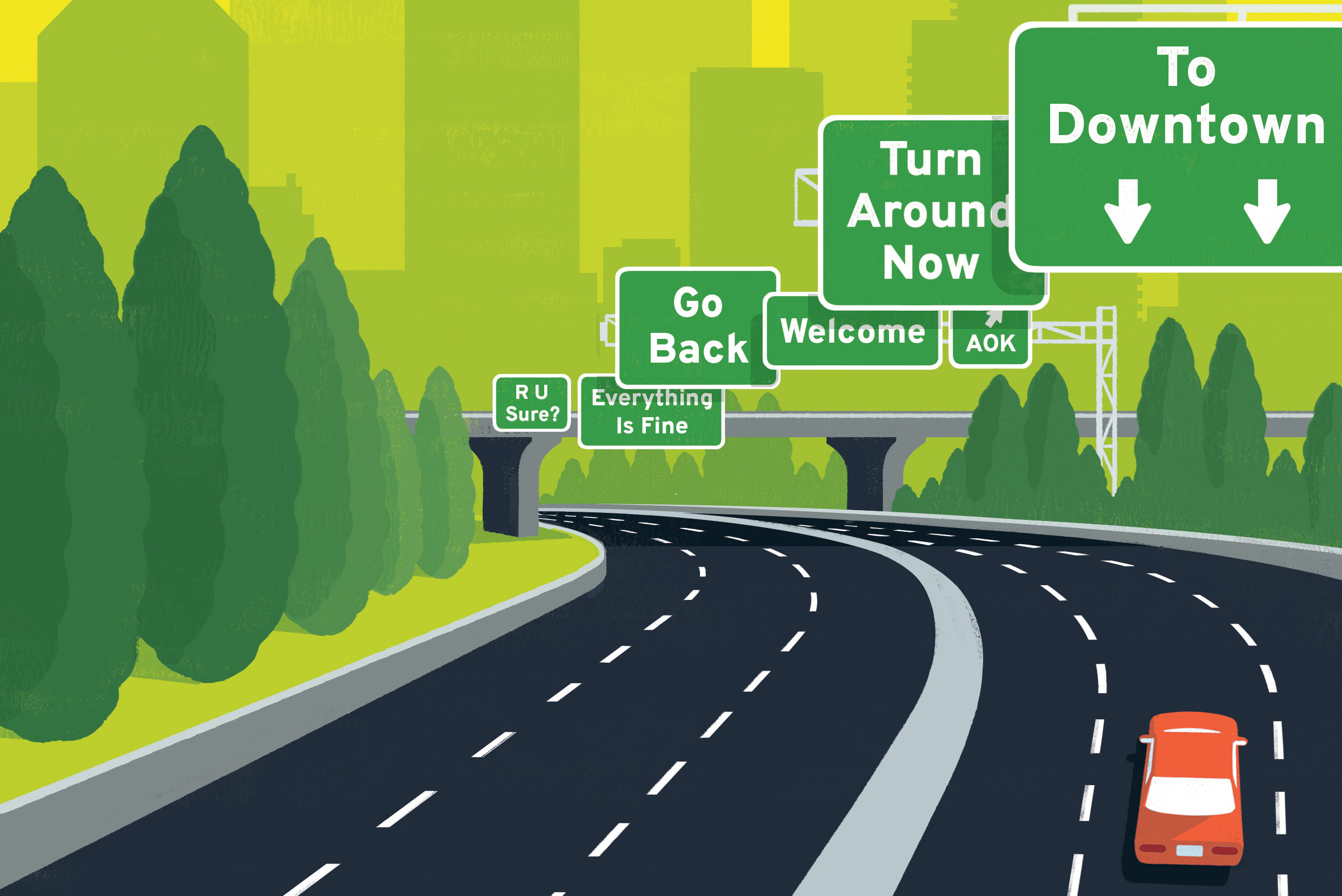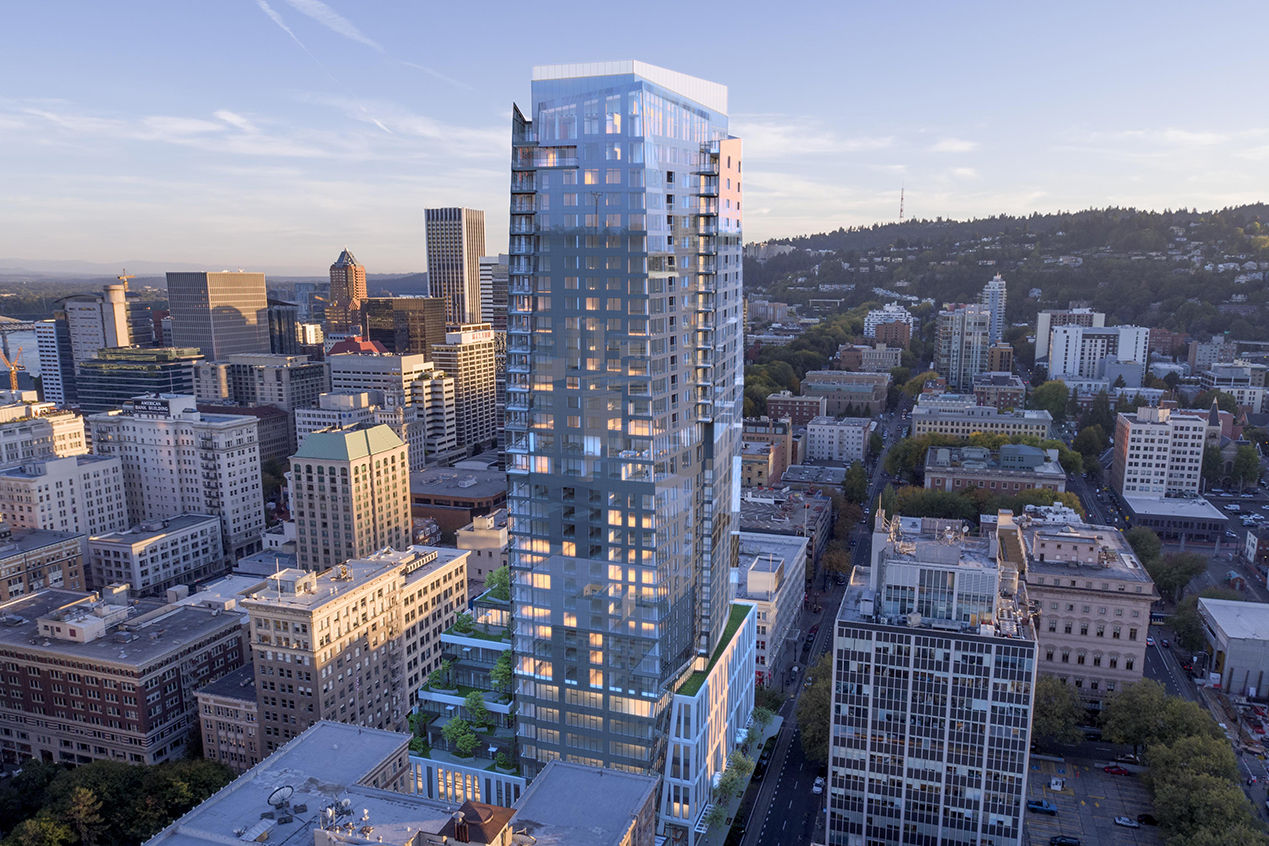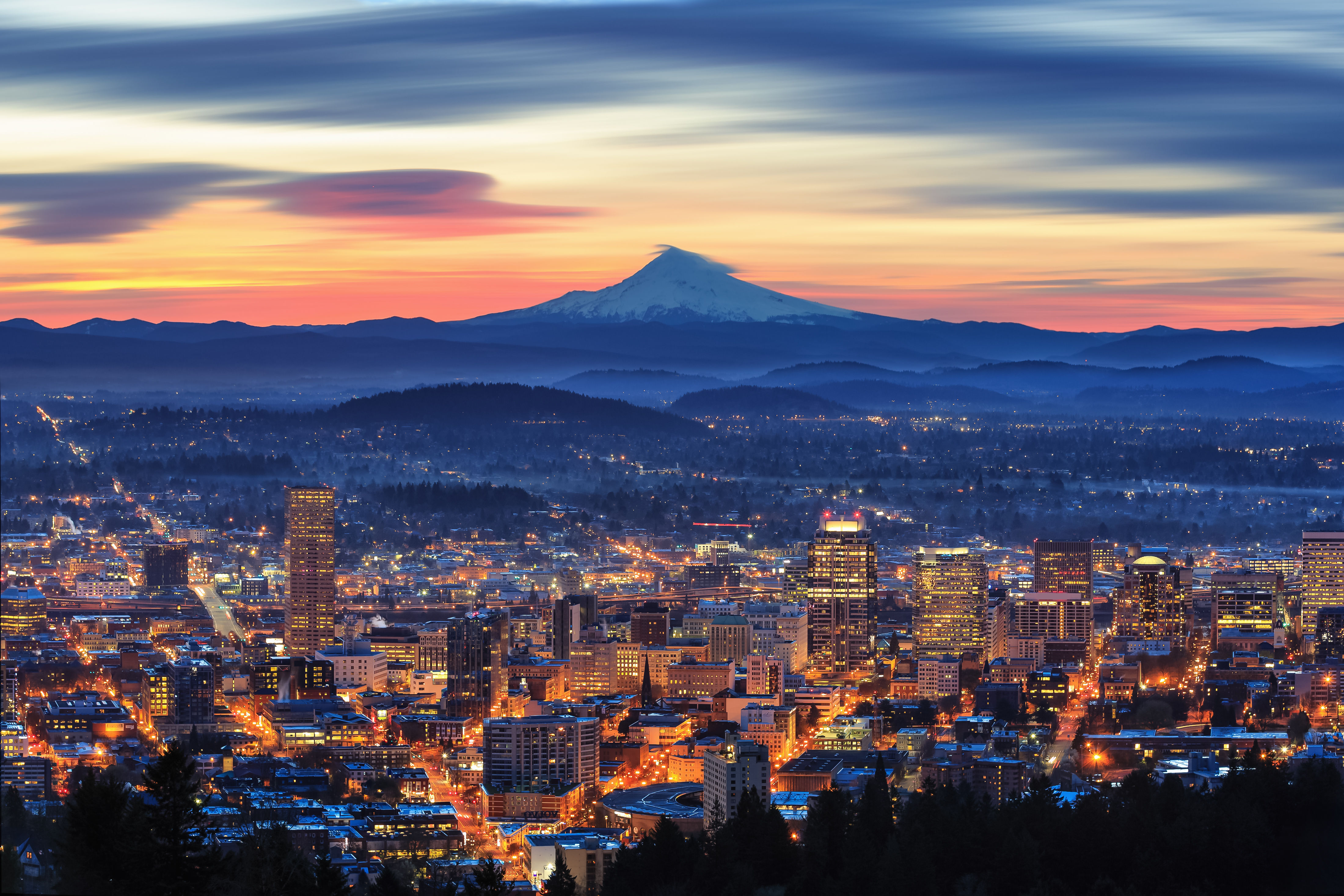
When the Topic Is Downtown Portland, the Tone Can Be Toxic
Despite rumors to the contrary, downtown Portland is not dead. In fact, there are distinct signs of life. There are lines outside Powell’s again. A handful of hardy new businesses are taking advantage of vacant spaces and cheap(er) rents. The heavy construction work on Portland’s first five-star hotel rumbles on. Portland State University reopens this fall, bringing almost 30,000 students back downtown; major employers have pushed back plans to return given our COVID caseloads, but hope to be back around November, after the delta variant is expected to peak.
So: the Fox News–propelled narrative that downtown is on permanent fire borders on the absurd, even for that network’s target audience.
But what is a raging inferno is the clutch of conversations about downtown Portland. It’s understandable: Downtown is a rapid antigen test for our civic health. Those relatively few square blocks are an important economic engine for the state: 100,000 people worked downtown prepandemic, contributing a hefty chunk of the 52 percent of overall state tax revenue that flows from the Portland metro area and will support a record $27 billion in spending on schools, social services, and public safety in the 2021–2023 biennium.
Complicating matters, perspectives about downtown are now also frequently tangled up in feelings about 2020’s social justice protests. To express dismay at downtown’s struggles is, in some circles, akin to expressing disapproval of the BLM protests that grabbed national headlines last summer.
That leaves moderate takes on our downtown at a premium. In late 2020, a group of businesses and nonprofits calling itself the Rose City Collective published an “open letter” to the city, proclaiming that Portland was “at risk of becoming another abandoned and dormant city that once was.” Twitter clapbacks from local activists—and some reporters—were swift and defensive, insisting there’s nothing wrong with downtown that an end to the pandemic won’t fix. And that kerfuffle pales in comparison to the reaction to the report by KOIN 6 in May (“From ‘wonderful’ to ‘war zone’: Portland’s reputation transformation”) that cast downtown as a hellscape via the voices of tourists and nonresidents.
But the anger over superficial reporting and knee-jerk reactionism glosses over the fact that downtown Portland, the state’s vital anchor neighborhood, does face intractable problems: persistent houselessness, struggles for many businesses, and a worrying retreat of investment capital, as well as tourists, workers, and residents. And as the city continues the long process of waking up from its pandemic-induced slumber (delta variant willing), we’re officially out of excuses.
Success downtown won’t mean a return to Portland circa February 2020. Even then, downtown was coasting on its reputation as a bike-and-doughnut-powered haven, leaning on the region’s enduring natural beauty as a “second paycheck” draw.
Meanwhile, developers had spent a decade gambling on shiny new downtown projects before lining up tenants. True, Portland’s downtown office vacancy rate for the first quarter of 2021 was 19.5 percent, above the national average of 15.1 percent—but even in the prepandemic first quarter of 2020, it was 13.8 percent, also about 3 percentage points above the national average. There was trouble in Rose City even before the world hit pause.
At least partly because of that building frenzy, downtown office vacancy rates are now higher than almost all peer cities, says Ashley Connor, a field research manager for CBRE, the commercial real estate giant that has an outsize presence downtown. And unlike midsize cities to which it is often compared—Salt Lake, Austin, Denver—Portland doesn’t have state government as an anchor tenant to lean on.
“Can effectively two-thirds of the workforce that used to be there support a vibrant amenity space—coffee shops, restaurants, bars ... even if vacancies go back to where they were?” asks Mike Wilkerson, director of analytics at consulting firm ECONorthwest, noting that most businesses probably won’t immediately require employees to be back at work full-time, five days a week. “Occupancy in terms of bodies ... won’t be anywhere near peak capacity.”
That shifts some of the burden for a reawakening of downtown onto two other groups: tourists and residents. Despite a hotel building spree, tourists have yet to flock back to downtown Portland. Travel spending in the city overall went from $5.6 billion in 2019 to $2.4 billion in 2020, a 58 percent decrease, prompting a correlated drop in local tax collection. To combat that, Travel Portland launched a national campaign over the summer acknowledging and celebrating the city’s unapologetic “dualities” (while not lingering on, say, footage of teargassed protesters or homeless encampments).
Downtown’s houseless population is poised to expand even further before it contracts, according to Katrina Holland, the executive director of Join PDX, a houseless advocacy nonprofit. It takes time to secure not only the permanent housing needed, but also the mental health and housing placement workers to support that transition, Holland says. And pandemic-era eviction moratoriums are expiring once extensions for those who apply for rental assistance run out, putting a new group at risk, she says.
Solving the problem isn’t just about money, which is pouring in at unprecedented levels from local, state, and federal sources. But rifts have emerged in how it should be spent, a deep disagreement that’s divided even those with shared progressive values.
Downtown neighbors and businesses argue for setting aside money for stop-gap solutions, like the six citywide permitted camping sites set to open by the end of 2021. Holland says that’s a blatant attempt to warehouse people and force conformity in service of a more pristine downtown.
“They say, in order for you to be houseless, you have to camp in certain places, you have to be not drug addicted,” Holland says. “Those arguments are beyond paternalistic. If people are facing life circumstances where following a set of rules—you have to leave at a certain time, sleep at a certain time—doesn’t work for them, they should have the choice to be able to camp and survive and be all right.”
Members of the Downtown Neighborhood Association bristle at those characterizations. They’ve launched efforts to hand out water on hot days and blankets on cold ones to their unhoused neighbors, and conducted their own census when the federal government suspended its regular count. Volunteers recorded at least 140 tents and 180 people living on the streets downtown in September 2020.
“If there was an earthquake in Haiti, Mercy Corps would be down there within weeks, with shelter, food, water, showers, laundry,” says David Dickson, who is active in the neighborhood association. “Here in Portland, those services don’t exist. We are living in this humanitarian crisis. We have to deal with it.”
The city and county are trying to deal with it, albeit in frustrating fits and starts. Programs are underway not just for emergency shelter sites but to build up permanent, supported housing. Meanwhile, the city is monitoring Portland Street Response for future expansion; the program sends a paramedic and a social worker to respond to 911 calls about mental health distress, instead of the police.
As summer turns to fall, policy changes like these—not as sweeping as everyone would want, but not to be discounted, either—will continue. But without sustained, meaningful progress in social justice and on houselessness, downtown’s ennui will take longer to lift, says Wilkerson, the economist, with far-reaching consequences for services statewide.
The first step to fixing it, of course, is one of the most difficult: being open to the idea that there’s a problem with downtown at all.




